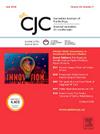The Safety and Feasibility of Same-Day Discharge for Patients Undergoing Transcatheter Aortic Valve Replacement: A Systematic Review and Meta-analysis
IF 5.3
2区 医学
Q1 CARDIAC & CARDIOVASCULAR SYSTEMS
引用次数: 0
Abstract
Background
Next-day discharge (NDD) after transcatheter aortic valve replacement (TAVR) has been shown to be safe in appropriately selected patients and has been implemented into clinical practice. As the demand for TAVR grows, improving its accessibility is crucial. Several studies have trialled same-day discharge (SDD) after TAVR, but a review has not been performed.
Methods
Five databases were searched. Baseline demographics, study characteristics and the assessment criteria used to determine eligibility for SDD were extracted and compared. Proportional meta-analysis was used to compare post-TAVI outcomes between SDD and NDD patients.
Results
Six studies were included from 1734 screened articles. Of 3519 patients, 318 (9.0%) underwent SDD (mean age 78.2 ± 8.7 years, 59.3% male). Balloon-expandable valves were used in 91.6% of cases, and self-expanding valves in the remaining 8.4%. Patients that underwent SDD experienced lower rates of mortality (OR 0.104, 95% CI 0.015-0.998), all-cause readmission (OR 0.194, 95% CI 0.052-0.717), cardiovascular readmissions (OR 0.155, 95% CI 0.026-0.971), and new pacemaker requirement (OR 0.167, 95% CI 0.028-0.995) at 30 days after TAVR compared with patients that underwent NDD. There was no difference in rates of stroke (OR 0.407, 95% CI 0.015-16.694) or major vascular complications (0.0% vs 0.0%).
Conclusions
Current evidence supports the safety and feasibility of SDD after elective transfemoral TAVR in appropriately selected patients. Heterogeneity between eligibility criteria used to select patients for SDD, especially related to conduction disease, poses a barrier to implementation. Further research on self-expanding valves is needed.
经导管主动脉瓣置换术患者当日出院的安全性和可行性:一项系统综述和荟萃分析
背景:经导管主动脉瓣置换术(TAVR)后次日出院(NDD)已被证明在适当选择的患者中是安全的,并已被应用于临床实践。随着对TAVR需求的增长,改善其可及性至关重要。有几项研究在TAVR后试验了当天出院(SDD),但尚未进行审查。方法:检索5个数据库。提取和比较基线人口统计学、研究特征和用于确定SDD资格的评估标准。采用比例荟萃分析比较SDD和NDD患者tavi后的结局。结果:从1734篇筛选文章中纳入了6项研究。在3519例患者中,318例(9.0%)接受了SDD(平均年龄78.2±8.7岁;59.3%的男性)。91.6%的病例采用球囊膨胀阀,8.4%的病例采用自膨胀阀。与接受NDD的患者相比,接受SDD的患者在TAVR后30天的死亡率(OR 0.104, 95% CI: 0.015 - 0.998)、全因再入院(OR 0.194, 95% CI 0.052 - 0.717)、心血管再入院(OR 0.155, 95% CI 0.026 - 0.971)和新起搏器需求(OR 0.167, 95% 0.028 - 0.995)较低。卒中发生率(OR 0.407, 95% CI: 0.015 - 16.694)和主要血管并发症发生率(0.0% vs 0.0%)无差异。结论:目前的证据支持选择性经股骨TAVR术后SDD的安全性和可行性。用于选择SDD患者的资格标准之间的异质性,特别是与传导疾病相关的标准,给实施造成了障碍。自膨胀阀需要进一步的研究。
本文章由计算机程序翻译,如有差异,请以英文原文为准。
求助全文
约1分钟内获得全文
求助全文
来源期刊

Canadian Journal of Cardiology
医学-心血管系统
CiteScore
9.20
自引率
8.10%
发文量
546
审稿时长
32 days
期刊介绍:
The Canadian Journal of Cardiology (CJC) is the official journal of the Canadian Cardiovascular Society (CCS). The CJC is a vehicle for the international dissemination of new knowledge in cardiology and cardiovascular science, particularly serving as the major venue for Canadian cardiovascular medicine.
 求助内容:
求助内容: 应助结果提醒方式:
应助结果提醒方式:


